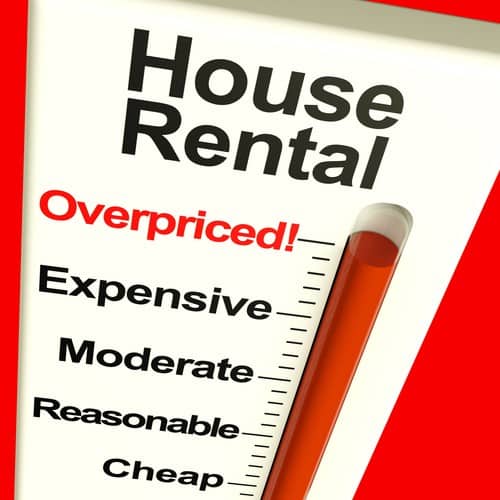
by admin | Aug 27, 2015 | Homes, Villas and Condos, Long Term Rental, Mortgages, New Construction, News, Real Estate News
Rising rents help revive home construction in Orlando area
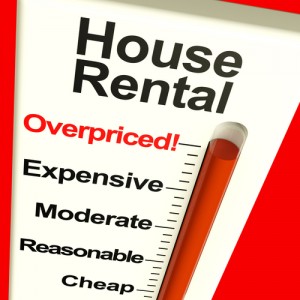
After renting for years and cleaning up her foreclosure-bruised credit, Hunters Creek resident Tabetha Morway just purchased a new house with mortgage payments less than her rent.
“From my experience, people are still leery about getting mortgages,” Morway said. “They’ve heard so many horror stories and the risk is still there, but they’re starting to take the leap they wouldn’t have taken a few years ago. People are keeping their jobs and getting raises.”
Morway isn’t alone. The latest new-home construction reports speak to a housing recovery shift, with builders suddenly staking out new positions.
Building permits for houses in Orlando increased by 20 percent for the first half of this year compared to the same period last year, according to the National Association of Home Builders. Orlando’s home-construction rate grew twice as much as the nation’s and also more than Florida’s 15 percent growth.
It’s a change for Central Florida, where former homeowners had been flocking to rentals: The region’s home-ownership rate dropped from 77 percent to 59 percent during the decade that ended in 2013, according to Orlando Sentinel research.
Morway will be moving to the Legacy Park subdivision in Kissimmee, where builders said they had to slow down on preparing lots for buyers because the home sites were about to run out. “We’re having to slow down the sales because we’re selling them so quickly,” said Park Square Homes Sales Director Jared Weggeland.
MetroStudy reported that Orlando-area home builders have added about 100 model homes this year, a telling sign. “We’ve gone from 375 to 475 models in six months so builders are selling out of lots and communities they held for years — possibly before the bust,” said Anthony Crocco, regional manager for MetroStudy.
New-home construction prices are also rising. Average new-home prices in the region grew 8 percent in the second quarter from a year earlier to reach $320,400, according to Charles Wayne Consulting. That puts new-home prices rising at the same rate as single-family and vacation homes for that period, according to Florida Realtors.
During the last year alone, Orlando-area rental rates climbed 7.9 percent to reach an average of $1,005 and vacancies plummeted to 3.5 percent, according to commercial brokerage firm Marcus & Millichap. Looking ahead, projections call for apartment rents to increase another 5.9 percent during the next four quarters but an array of new apartments may edge up vacancy rates to 4 percent, Marcus & Millichap reported.
Rising rental rates have translated into home sales particularly at first-time buyer communities like Legacy Park but new-home sales overall don’t compare with fast pace of home building. New-home closings were up only 4 percent from the second quarter of 2014, according to Charles Wayne Consulting. And MetroStudy described them as generally flat during the past year.
Crocco said it’s typical for starts to outpace closings for the second quarter, “although the magnitude of the difference is high for the market.” Despite the gap, he projected construction to rise along with new employment and other factors.
Before Morway purchased the house she’s having built at Legacy Park, her monthly rent in Hunters Creek had increased from $900 to $1,400 during the last six years.
Source: Orlando Sentinel
How reviving! Rising rental prices encourages the buying process, making a huge impact in our real estate market. Home owners will also benefit from this rise in rental prices on their single-family vacation homes in the Central Florida area. Purchasing a home is not done with a snap of a finger. We suggest you do not buy directly from the builder as their interest is with the builder, not you as the buyer. New home construction varies depending on your price range and desired location. Follow this link to learn more about new home construction breaking ground in and around the Four Corners area.
by Elsa Soto | May 19, 2015 | Mortgages, Property for Sale, Real Estate News
Distressed sales be gone!
Daily Real Estate News |

Foreclosure inventory plunged nearly 26 percent and the number of completed foreclosures fell by nearly 16 percent in March, according to CoreLogic’s March 2015 National Foreclosure Report, released Tuesday.
In March, there were 41,000 completed foreclosures, down from 48,000 a year ago. That represents a 65 percent decrease from the peak of completed foreclosures in September 2010. Completed foreclosures are the total number of homes actually lost to foreclosure.
The National Association of REALTORS® reported that distressed sales – including foreclosures and short sales – accounted for 10 percent of sales in March, down from 14 percent a year ago. Foreclosures and short sales sold for an average discount of 16 percent below market value in March.
The trend of fewer distressed sales is likely to stick around as more home owners keep up with their mortgage payments. CoreLogic reports that the number of mortgages in serious delinquency fell by 19.1 percent year-over-year with 3.9 percent of mortgages now in serious delinquency (defined as 90 days or more past due). That marks the lowest delinquency rate since May 2008.
“Foreclosures and serious delinquency rates continue to drop as the home purchase market begins to emerge from its eight-year slump,” says Anand Nallathambi, president and CEO of CoreLogic. “Based on the current trends in completed foreclosure rates, we expect the foreclosure inventory to drop below 1.3 percent by midyear, a level not seen since the end of 2007. Many states in the Northeast and Midwest, as well as Florida, still have elevated levels of distressed housing, but they are making more rapid progress as of late. In March, foreclosures in these areas accounted for a large proportion of completed foreclosures.”
The five states with the highest number of completed foreclosures in the past year are Florida, Michigan, Texas, Georgia, and Ohio.
As foreclosures decrease, the number of normal sales increase. Are you ready for the next step in purchasing your Florida Vacation home? Don’t waste any time! The Sunshine State is calling, can you hear it? Contact one of our experienced agents today and we’ll answer any and all of your questions.
Source: CoreLogic
by Elsa Soto | Mar 27, 2015 | Investment Property in Florida, Mortgages, Property for Sale, Real Estate News
Mortgage rates drop even lower this week…
For the second consecutive week, mortgage rates continued to fall, with the 30-year fixed-rate mortgage still well below 4 percent and 15-year rates dipping below 3 percent, Freddie Mac reports in its weekly mortgage market survey. Now is the time to buy your Florida Vacation Villa!
“Low mortgage rates are a welcome sign for those in the market to buy a home this spring season and will help to support homebuyer affordability,” says Len Kiefer, deputy chief economist at Freddie Mac.
Freddie Mac reports the following national averages with mortgage rates for the week ending March 26:
- 30-year fixed-rate mortgages: averaged 3.69 percent, with an average 0.6 point, dropping from last week’s 3.78 percent average. Last year at this time, 30-year fixed-rates averaged 4.40 percent.
- 15-year fixed-rate mortgages: averaged 2.97 percent, with an average 0.6 point, dropping from last week’s 3.06 percent average. A year ago, 15-rates averaged 3.42 percent.
- 5-year hybrid adjustable-rate mortgages: averaged 2.92 percent, with an average 0.4 point, dropping from last week’s 2.97 percent average. Last year at this time, 5-year ARMs averaged 3.10 percent.
- 1-year ARMs: averaged 2.46 percent, with an average 0.4 point, holding the same as last week. A year ago, 1-year ARMs averaged 2.44 percent.
Source: Freddie Mac

by admin | Jan 17, 2015 | Mortgages
Average rate on 30-year mortgage falls to 3.66% OMG!!!

Property in Orlando – Mortgage Rate
Mortgage Rate Trend Index
Rates aren’t done falling yet, say 64% of the industry experts polled this week by Bankrate.com. Only 7% predict an increase over the short term, and the remaining 29% foresee little movement one way or the other.
WASHINGTON (AP) – Jan. 16, 2015 – Average long-term U.S. mortgage rates fell for the third straight week, with the benchmark 30-year rate again marking its lowest level since May 2013. The average for a 15-year mortgage, a popular choice for people who are refinancing, dipped below 3 percent for the first time since then.
Mortgage company Freddie Mac said Thursday the nationwide average for a 30-year mortgage slid to 3.66 percent this week from 3.73 percent last week. The rate for the 15-year loan declined to 2.98 percent from 3.05 percent last week.
The ongoing decline in rates lured a crop of prospective buyers, as applications for mortgages marked their biggest weekly gain last week in over six years. Applications jumped 49.1 percent, the biggest weekly increase since November 2008, according to the Mortgage Bankers Association.
A year ago, the 30-year mortgage stood at 4.41 percent and the 15-year mortgage at 3.45 percent. Mortgage rates have remained low even though the Federal Reserve in October ended its monthly bond purchases, which were meant to hold down long-term rates.
The drop in mortgage rates has come as bond yields have hit record low levels. Mortgage rates often follow the yield on the 10-year Treasury note, which has fallen below 2 percent. Bond yields rise as prices fall.
Bond prices were an unexpected strong spot for the financial markets last year, reflecting concerns over global economic weakness.
The 10-year note traded at 1.84 percent Wednesday, down from 1.97 percent a week earlier. It traded at 1.82 percent Thursday morning.
To calculate average mortgage rates, Freddie Mac surveys lenders across the country at the beginning of each week. The average doesn’t include extra fees, known as points, which most borrowers must pay to get the lowest rates. One point equals 1 percent of the loan amount.
The average fee for a 30-year mortgage was 0.6 point, unchanged from last week. The fee for a 15-year mortgage remained at 0.5 point.
The average rate on a five-year adjustable-rate mortgage fell to 2.90 percent from 2.98 percent. The fee declined to 0.4 point from 0.5 point.
For a one-year ARM, the average rate slipped to 2.37 percent from 2.39 percent. The fee held at 0.4 point.
 Copyright © 2015 The Associated Press. All rights reserved. This material may not be published, broadcast, rewritten or redistributed.
Copyright © 2015 The Associated Press. All rights reserved. This material may not be published, broadcast, rewritten or redistributed.
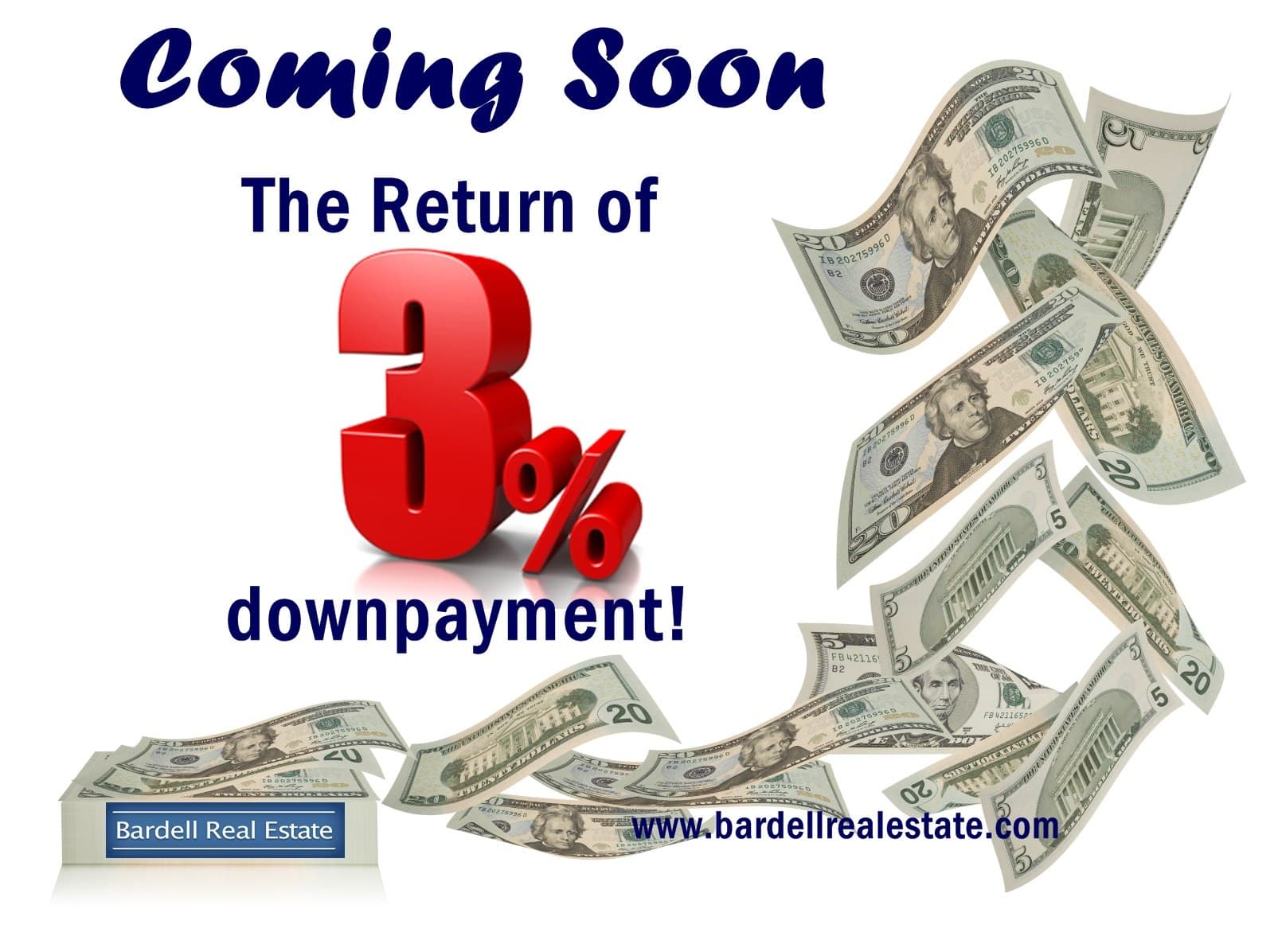
by admin | Dec 9, 2014 | Mortgages, Property for Sale in Orlando, Real Estate News
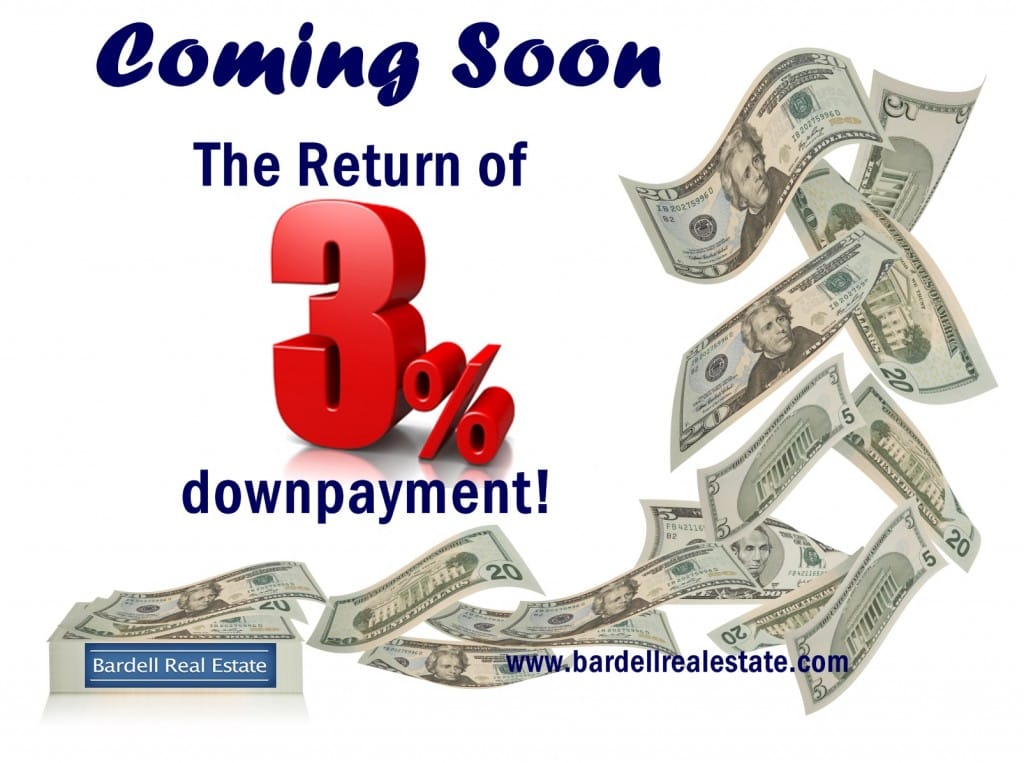
3 percent downpayment
WASHINGTON (AP) – Dec. 9, 2014 – Some Americans will soon be able to buy a Property in Orlando with a downpayment as low as 3 percent, compared with the current minimum of 5 percent, the mortgage giants Fannie Mae and Freddie Mac say.
The new lending guidelines announced by the companies Monday are designed to help more low-income and first-time buyers afford homes. Millions of Americans lost their savings or no longer had the income needed to set aside money for a home in the aftermath of the 2008 financial crisis and the Great Recession. That has held down the sales of houses and condominiums and slowed the economic recovery.
The guidelines are designed to prevent the kind of reckless lending that fueled a housing bubble and eventually triggered the recession. Borrowers must have enough income to repay loans on a monthly basis for homes that would be their main residence. This guideline would be intended to limit financial speculation.
“These underwriting guidelines provide a responsible approach to improving access to credit while ensuring safe and sound lending practices,” Mel Watt, director of the Federal Housing Finance Agency (FHFA), said in a statement. The FHFA oversees Fannie and Freddie, which have been under government control since 2008 because of the housing bust.
Watt had announced in October that Fannie and Freddie had reached an agreement with major banks to expand lending. The FHFA declined Monday to say how many borrowers might benefit from having a 3 percent down payment.
The standard down payment for mortgages insured through Fannie and Freddie has been 20 percent. That would mean that a first-time buyer would need $41,600 in cash to purchase a median-priced home of $208,300, according to the National Association of Realtors. Just 29 percent of home purchases in October went to first-time buyers, compared with a historic average of 40 percent, the Realtors reported.
The new loans would be fixed-rate mortgages of up to 30 years for primary residences, though some policies vary between the companies.
Fannie could begin underwriting the loans before the end of the year. It said the loans would be geared toward first-time buyers, require mortgage insurance payments because of the low down payment and mandate that buyers complete a financial counseling program.
Freddie intends to begin offering its mortgages as early as March 2015, saying it would be an option for low- and moderate-income borrowers. It requires that borrowers earn less than an area’s median income, in addition to paying insurance and receiving counseling. Monthly payments could not exceed 43 percent of the borrower’s income.
Fannie and Freddie own or guarantee about half of all U.S. mortgages, worth about $5 trillion. Along with other federal agencies, they back roughly 90 percent of new mortgages.
The two companies don’t directly make loans to borrowers. They buy mortgages from lenders, package them as securities, guarantee them against default and sell them to investors. That helps make loans available.
The government took over Fannie and Freddie in September 2008, after a market meltdown compounded the losses caused by risky mortgages and threatened to shut down the entire housing sector. Combined, the firms received taxpayer aid totaling $187 billion, which has since been repaid as they have returned to profitability.
 Copyright 2014 The Associated Press, Josh Boak. All rights reserved. This material may not be published, broadcast, rewritten or redistributed.
Copyright 2014 The Associated Press, Josh Boak. All rights reserved. This material may not be published, broadcast, rewritten or redistributed.
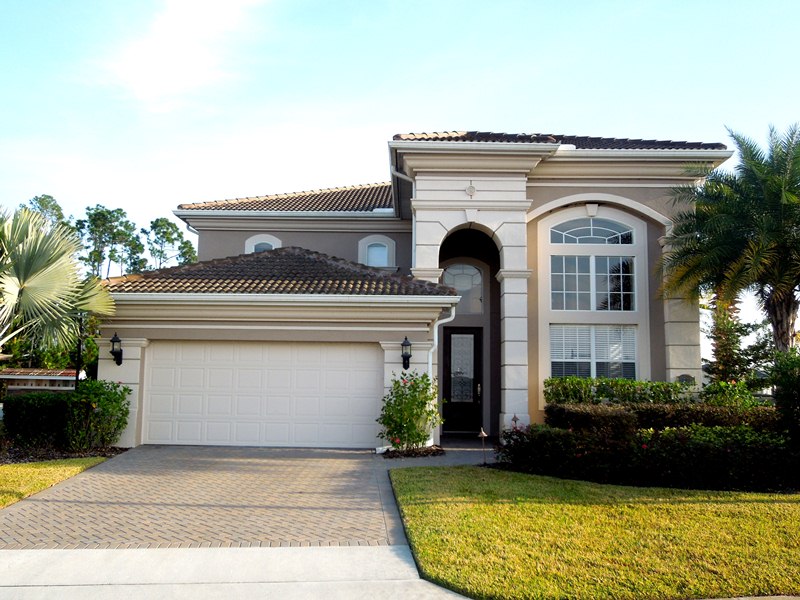
by Elsa Soto | Oct 24, 2014 | Investment Property in Florida, Mortgages, Property for Sale, Property for Sale in Orlando, Real Estate News
Average 30-year mortgage rate drops below 4%
 According to Freddie Mac, the average mortgage rate has dropped below 4% making property for sale in Orlando sound even more enticing! This exciting news has stuck around for going on 4 weeks and we hope to keep it going!!
According to Freddie Mac, the average mortgage rate has dropped below 4% making property for sale in Orlando sound even more enticing! This exciting news has stuck around for going on 4 weeks and we hope to keep it going!!
WASHINGTON (AP) – Oct. 17, 2014 – Average U.S. mortgage rates tumbled this week. The 30-year loan hit its lowest level since June 2013 as Treasury bond yields marked new lows amid concern over global economic weakness. It was the fourth straight week of declines for mortgage rates, making it more affordable to borrow to buy a home.
Mortgage company Freddie Mac said Thursday that the nationwide average for a 30-year loan dipped to 3.97 percent from 4.12 percent last week. The average for a 15-year mortgage, a popular choice for people who are refinancing, fell to 3.18 percent from 3.30 percent.
Mortgage rates often follow the yield on the 10-year Treasury note. The 10-year note traded at 2.13 percent Wednesday, down from 2.34 percent a week earlier. It traded at 2.11 percent Thursday morning. Bond yields rise when bond prices fall.
Treasury yields have dropped sharply on expectations that the world’s economic sluggishness could force the Federal Reserve to delay interest rate increases.
The deepening concern over the health of the world economy, and worries that global weakness could slow the U.S. economy and hurt corporate profits, played into the dizzying swoon Wednesday on Wall Street. Investors fled stocks and poured money into bonds. The Dow Jones industrial average dropped 460 points in afternoon trading, all three U.S. stock indexes were in negative territory for the year, and the so-called fear index spiked.
Mortgage Rate Trend Index: Only 27% of industry experts polled this week by Bankrate.com expect mortgage rates to go up over the short term; 45% foresee further declines, while 27% predict stability.
Mortgage rates have fallen even though the Federal Reserve appears set at the end of this month to end its monthly bond purchases, which are intended to keep long-term borrowing rates low. Yet Fed officials have indicated that they will continue to hold shorter-term rates at near-zero levels until there are signs of rising inflation.
At 3.97 percent, the 30-year rate is down from 4.53 percent at the start of the year and at its lowest point since the week of June 20, 2013, when it was 3.93 percent.
To calculate average mortgage rates, Freddie Mac surveys lenders across the country between Monday and Wednesday each week. The average doesn’t include extra fees, known as points, which most borrowers must pay to get the lowest rates. One point equals 1 percent of the loan amount.
The average fee for a 30-year mortgage was unchanged from last week at 0.5 point. The fee for a 15-year mortgage also remained at 0.5 point.
The average rate on a five-year adjustable-rate mortgage dropped to 2.92 percent from 3.05 percent. The fee was steady at 0.5 point.
For a one-year ARM, the average rate fell to 2.38 percent from 2.42 percent. The fee held at 0.4 point.
 Copyright © 2014 The Associated Press. All rights reserved. This material may not be published, broadcast, rewritten or redistributed.
Copyright © 2014 The Associated Press. All rights reserved. This material may not be published, broadcast, rewritten or redistributed.
Learning how to purchase your property for sale in Orlando can be challenging but we are here to help! Click this link to learn more about investment properties in the area.







